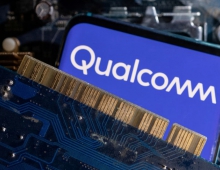
Qualcomm Extends LTE to Unlicensed Spectrum to Enhance Mobile Experiences
To address the demand for mobile data, Qualcomm Technologies is extending LTE to unlicensed spectrum (LTE-U), and today announced that it has integrated the technology into its latest small cell solutions and RF transceivers for mobile devices. Qualcomm Technologies also announced that it successfully completed over-the-air testing to prove co-existence between multiple LTE-U and Wi-Fi access points in the unlicensed spectrum under extreme load conditions.
"As the Internet enters a new phase of growth, in which more devices are connected and share richer data, there is a need to cost effectively address the challenges of a 1000x increase in mobile data traffic. To do this, we need a combination of more spectrum, more efficient use of existing spectrum, and more small cells," said Matt Grob, executive vice president, Qualcomm Technologies, Inc., and chief technology officer. "Our job is to help the industry make the best use of all available spectrum, using both LTE and Wi-Fi technologies, to increase capacity."
Extending LTE Advanced to unlicensed spectrum helps operators meet capacity needs and enhance their mobile broadband services. LTE-U is designed to augment operators’ services to use channels in the less crowded 5 GHz unlicensed bands, and uses several coexistence features to support fair share use among the multiple users and technologies that access those bands.
Extending the benefits of LTE to unlicensed spectrum provides predictable performance with an anchor in the licensed spectrum; a better performance than either LTE or Wi-Fi used individually, with longer range and more capacity; and, additional capacity for carriers to augment mobile broadband.
Qualcomm announced the first integration of LTE-U into a small cell SoC to expand capacity and extend LTE networks. The FSM99xx, a family of small cell SoCs, will add LTE-U and be available in the second half of 2015. The FSM99xx solutions integrate Qualcomm Technologies’ 3G and 4G and support its Qualcomm VIVE 802.11ac/n Wi-Fi to enable full-featured small cells that provide performance with greater power efficiency.
Along with integration of LTE-U into the FSM99xx product family, Qualcomm Technologies announced that the FTR8950 as the first dedicated RF solution for small cells designed to meet the requirements of LTE-U operation and network listen in unlicensed 5 GHz bands. The new small cell RF transceiver is a successor to the FTR8900 RFIC and supports features such as digital pre-distortion and dedicated network listen.
Qualcomm 's new WTR3950 is the first dedicated RF solution for mobile devices designed to meet the requirements of LTE-U operation in unlicensed 5 GHz bands. Qualcomm Technologies’ newest 28 nm RF transceiver offers an small footprint and will be commercially sampling in the second half of 2015.
The WTR3950 pairs with the WTR3925, the first 28 nm RF for single chip Cat 6 carrier aggregation, to support up to 3x20 MHz carrier aggregation across licensed and unlicensed spectrum. The WTR3950 can also support up to 40 MHz intra-band contiguous carrier aggregation in the 5 GHz bands.
In order for LTE-U to provide maximum benefit, it must operate alongside billions of existing Wi-Fi devices. Qualcomm Technologies is working to integrate LTE and Wi-Fi at the system level, and employs a set of protection features to promote the best possible co-existence between LTE-U and Wi-Fi networks.
In its San Diego, Calif. headquarters, Qualcomm Technologies engineers deployed a network comprising multiple Wi-Fi access points and LTE-U small cells – all operating in a single channel in the unlicensed 5GHz band – to evaluate real-life performance and interference in multiple scenarios. After testing that replicated extremely dense radio conditions, the data concluded that LTE-U can not only provide superior performance than either LTE or Wi-Fi used individually, but fairly coexists with Wi-Fi. In many cases, shifting traffic from Wi-Fi to LTE-U can actually improve performance for Wi-Fi users, due to the efficient way that LTE uses the unlicensed spectrum.
Testing scenarios included both "adaptive duty-cycle" based coexistence which is suitable for commercial LTE-U deployments in countries such as the US, China and Korea using LTE Release 10 and beyond, as well as Listen Before Talk (LBT) based techniques that are proposed through a work item for an upcoming release of the LTE standard, Release 13, which is expected to define a version of LTE-U known as Licensed-Assisted Access (LAA), suitable for deployments in other regions such as Europe and Japan.
At Mobile World Congress 2015 in Barcelona March 2-5, Qualcomm Technologies will conduct live demonstrations of the co-existence between LTE-U and Wi-Fi. Also at the show, the company will participate in a number of live LTE-U demonstrations using Qualcomm’s test user equipment.





















